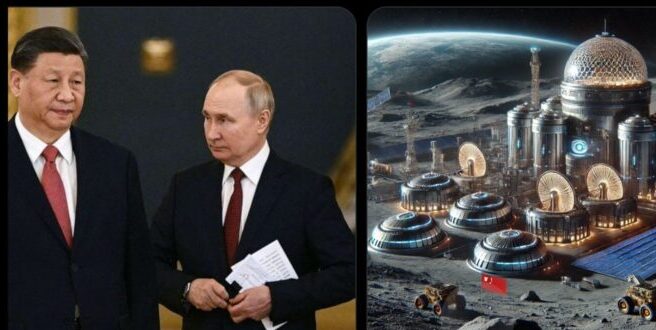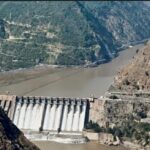Russia announces together with China it will deliver and install a nuclear power plant on the Moon between 2033 and 2035
Russia and China Announce Plan to Deliver and Install a Nuclear Power Plant on the Moon Between 2033 and 2035
In an unprecedented move, Russia, in partnership with China, has announced a groundbreaking plan to deliver and install a nuclear power plant on the Moon between 2033 and 2035. This ambitious initiative is set to be one of the most significant steps in lunar exploration, aiming to address the growing need for sustainable power sources as space exploration advances. The announcement has sent shockwaves across the scientific community, with experts discussing the potential implications of such a monumental project. Here’s a closer look at what this collaboration means, the technology behind it, and what it could mean for the future of space exploration.
A New Era of Lunar Exploration
The announcement of Russia and China’s joint venture to place a nuclear power plant on the Moon marks a new era in space exploration. The Moon has long been a focal point for space agencies worldwide, with several nations, including the United States, Russia, China, and private companies, planning missions to explore its surface and resources. However, the issue of sustainable power has always been a major challenge.
Traditional power sources like solar energy face significant limitations on the Moon due to its 14-day-long nights and the harsh environment. As human presence on the Moon increases, particularly with the goal of establishing long-term bases or mining resources, a reliable energy source becomes crucial. A nuclear power plant could provide the consistent, long-term energy needed to support lunar missions, research, and potential habitation.
Russia and China’s Strategic Partnership
The collaboration between Russia’s space agency, Roscosmos, and China’s space agency, CNSA, is one of the most significant space partnerships in recent history. Both countries have made substantial progress in space exploration over the past few decades, with China’s growing space ambitions and Russia’s expertise in space technology complementing each other.
For Russia, the project represents an opportunity to leverage its nuclear technology expertise. Russia has developed advanced nuclear reactors for space missions, including the successful deployment of the “Bion” spacecraft, which used a nuclear reactor to provide energy for long-duration missions. China, on the other hand, has made significant advancements in space exploration, including its successful lunar rover missions and ambitious plans to establish a permanent lunar base.
By combining their strengths, Russia and China aim to address one of the major challenges of lunar exploration—sustaining power over extended periods in a harsh and remote environment. This collaboration could also help both nations enhance their space programs and solidify their positions as leaders in space exploration.
The Technology Behind the Nuclear Power Plant
The planned nuclear power plant is expected to use a compact, highly efficient reactor capable of withstanding the extreme conditions of the lunar surface. The reactor will likely be based on existing space-grade nuclear technology, which has been used successfully in satellites and spacecraft for decades. The technology will need to be adapted to function on the Moon, where temperatures can swing drastically from extreme heat to extreme cold.
The primary advantage of nuclear power for lunar missions is its ability to provide a consistent and reliable energy source, unlike solar power, which is intermittent due to the Moon’s long nights. A nuclear reactor would be able to operate continuously, ensuring that lunar bases or research stations can maintain power even during the 14-day lunar night when solar panels would be ineffective.
In addition to providing power for research and exploration, the nuclear power plant could also support future lunar mining operations, which are expected to play a key role in the Moon’s economic future. As nations look to exploit the Moon’s resources, such as water ice and valuable minerals, having a stable energy source will be crucial for the success of these operations.
Potential Challenges and Safety Considerations
While the idea of a nuclear power plant on the Moon may sound promising, it comes with significant challenges and safety concerns. The primary concern is ensuring the safe transport and deployment of nuclear materials to the Moon. Given the distances involved and the hostile environment of space, ensuring the safe delivery and operation of the reactor is critical. Any mishap during the launch or deployment of nuclear reactors could have far-reaching consequences, both for the mission and for global space exploration.
Additionally, the Moon’s surface is exposed to high levels of radiation from the Sun and cosmic rays. The nuclear power plant will need to be designed to withstand these conditions, ensuring that the reactor operates efficiently and safely in such an environment.
The environmental impact of a nuclear power plant on the Moon is another issue that will require careful consideration. While the Moon’s environment is uninhabited, space agencies must ensure that any long-term missions, including the installation of nuclear reactors, do not create debris or pose risks to future lunar exploration missions. International space law and treaties will likely play a role in governing the use of nuclear technology on the Moon.
What This Means for the Future of Space Exploration
The installation of a nuclear power plant on the Moon is more than just a technical achievement; it could pave the way for future human exploration of the solar system. As space agencies around the world look to establish permanent bases on the Moon and Mars, having reliable energy sources will be a cornerstone of any sustainable human presence beyond Earth.
A successful nuclear power plant on the Moon could also lead to new innovations in space technology, from power generation to propulsion and materials science. The knowledge gained from this project could be applied to future space missions, including long-duration trips to Mars and beyond. Moreover, the collaboration between Russia and China could serve as a model for future international partnerships in space exploration.
The Moon, once considered a distant and unexplored frontier, is now becoming a critical step toward humanity’s future in space. With the support of nuclear technology, countries like Russia and China are positioning themselves to lead the way in the next phase of lunar exploration and, ultimately, interplanetary colonization.
In Conclusion
The announcement that Russia and China will collaborate to deliver and install a nuclear power plant on the Moon between 2033 and 2035 is a bold and visionary step in the future of space exploration. With the need for sustainable energy sources growing as space missions become more advanced, this nuclear power plant could become a vital component of lunar exploration and beyond. While challenges remain in terms of safety, technology, and environmental considerations, this project marks an exciting new chapter in humanity’s journey into space, one that could lead to unprecedented discoveries and technological advancements. As space exploration continues to evolve, the Moon could soon become a stepping stone for deeper exploration of the cosmos.

















Post Comment